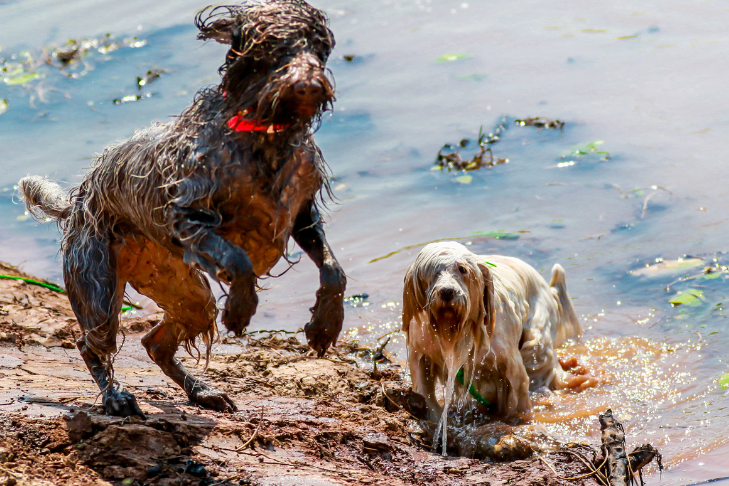What to Know About Blue Algae: Keeping Your Dog Safe After a Lake Swim

As the weather warms up, many of us are eager to take our pups out for a refreshing swim in nearby lakes or ponds. While these outings are super fun and give our dogs some much-needed relief from the heat, we need to be aware of potential dangers like blue-green algae. Knowing the risks associated with freshwater and blue-green algae, and taking the right precautions, can help keep your pet safe. We'll share everything you need to know about blue-green algae, including when and where pets are most at risk, and why it's so important to bathe your dog after lake visits.
What is Blue-Green Algae?
Blue-green algae, scientifically known as cyanobacteria, are naturally occurring organisms found in freshwater bodies such as lakes, ponds, and streams. In most cases, these algae are harmless; however, under certain conditions, like in warm waters that are high in nitrogen and phosphorus, they can multiply rapidly, leading to what is known as an algal bloom. These blooms can produce toxins that are harmful to humans and animals, including dogs.
When is Blue-Green Algae Most Dangerous?
The risk of encountering blue algae is highest during warm weather, especially in late summer and early fall. High temperatures, stagnant water, and excess nutrients create the perfect conditions for algal blooms. Remember, blue algae can still be present even if the water looks clear or has a slight blue-green tint.
When our dogs come into contact with or drink water contaminated with blue algae, they can experience a range of symptoms from mild to severe. Keep in mind that since dogs love to play games like fetch in the lake, they’re more likely to ingest water.

Signs of Algae Poisoning in Dogs
Keep an eye out for these common signs of blue-green algae poisoning in dogs:
- Vomiting
- Diarrhea
- Excessive drooling
- Difficulty breathing
- Weakness
- Seizures
If you think your dog has been exposed to blue-green algae, it's important to act as quickly as possible because in severe cases, it can be life-threatening.
Keeping Your Dog Safe from Blue Algae
To reduce the risk of blue-green algae exposure, it’s best to avoid swimming or letting your dog swim in bodies of water that have visible signs of algal blooms, like scum or a strong musty odor. Also, be cautious in areas where blue-green algae advisories have been issued. Local health departments and environmental agencies regularly monitor water bodies and share updates on potential hazards.
Even if you decide to let your dog swim in a lake or pond without visible signs of blue-green algae, it’s essential to take preventive measures. After each lake visit, make sure to thoroughly clean your dog’s coat with clean water and a dog-friendly shampoo to remove any potential algae residue. Pay special attention to sensitive areas, such as the paws, belly, and face.
Bathing your dog after a lake swim serves two purposes: it helps eliminate any residual algae that may be clinging to their coat, and it also allows you to thoroughly inspect your pet for any signs of blue algae exposure. If you notice any symptoms or suspect your dog may have ingested blue algae, contact your veterinarian immediately. Taking quick action can make a big difference in the outcome of blue algae poisoning cases.
As pet parents, keeping our furry friends safe and healthy is our top priority. Blue-green algae can be a real danger in lakes and ponds, but we can take steps to minimize the risks and keep our pups safe. By avoiding potentially dangerous areas, checking for local advisories, and giving them a good bath after a swim, we can reduce safety risks and prevent potential health issues, so they can have a safe and enjoyable summer. With a little knowledge and care, you and your four-legged friend will be able to enjoy the great outdoors all season long without any worries!


